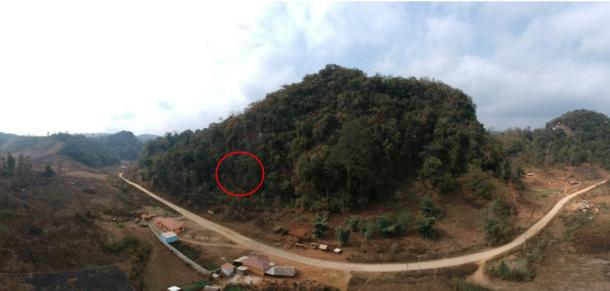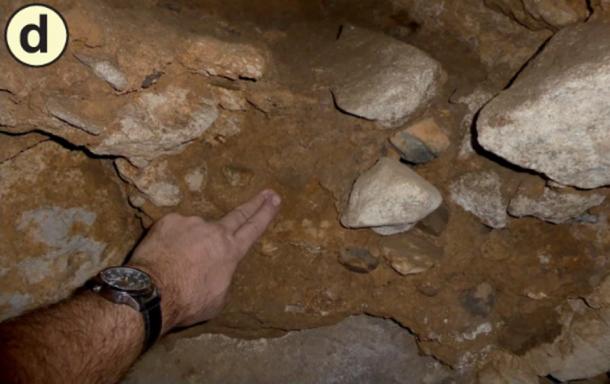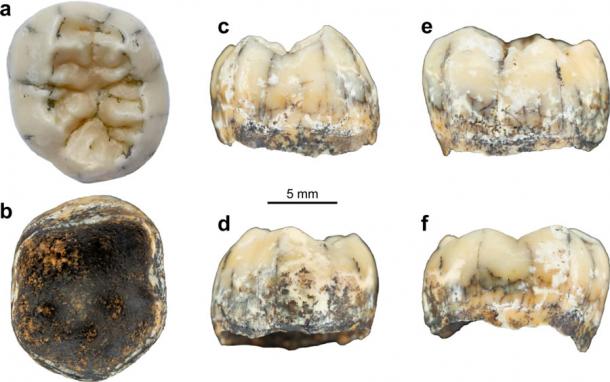
Denisovan Girl’s Tooth Is First Physical Evidence of Denisovans in Southeast Asia!
A team of archaeologists and anthropologists recovered an exceptionally rare molar tooth fossil from a cave in northern Laos. While the fossil bears some resemblance to the teeth of modern humans, a just completed study published in the Nature Communications journal suggests it came from a young, female Denisovan, the latter being a species of archaic humans that lived in Asia 50,000 years ago and earlier. Notably, the area where the tooth was found is located far from Siberia and the Tibetan Plateau, where previous Denisovan fossils have been unearthed. Thus, this is the first evidence of Denisovans in Southeast Asia.
Estimates of the age of the sediment layer where the tooth was found suggest the tooth’s owner lived between 164,000 and 131,000 years ago, placing the Denisovan female in the Middle Pleistocene. Any time a new fossil linked to these enigmatic ancient hominins is recovered it is considered a major discovery, and this particular tooth could help alter all previous conceptions about the population history of Denisovans in Southeast Asia.

A view of the area including cave Tam Ngu Hao 2, also known as Cobra Cave, in the Annamite Mountains in northeastern Laos, where a molar attributed to the extinct human species called the Denisovans was found. (Nature)
Evidence of Denisovans in Southeast Asia Is a Rare Thing!
“We’ve always assumed that Denisovans were in this part of the world, but we’ve never had the physical evidence,” study co-author Laura Shackelford, a paleoanthropologist at the University of Illinois Urbana-Champaign, told Nature. “This is one little piece of evidence that they were really there.”
- Study: How Pleistocene Hominins Crossed The Seas A Million Years Ago
- Prehistoric Skull and Jaw Found in Laos Rewrite Timelines and Reveal Diversity of Early Humans
Genetic studies of currently existing Southeast Asian populations have identified traces of Denisovan DNA, and now scientists have discovered a fossil in Southeast Asia that seems to confirm the presence of the extinct hominin species in that part of the world. This suggests that ancient Denisovans lived all across Asia and were not just restricted to Siberia and the Tibetan Plateau (modern-day China).
Expanding the Denisovan Fossil Record, One Tooth at a Time
The limestone cave Tam Ngu Hao 2, which is also known as Cobra Cave, is located in Laos’s Annamite Mountains in the northern part of the country. Several of the archaeologists and anthropologists involved in the new study discovered Tam Ngu Hao 2 in 2018, when they were looking for spots to excavate that might produce human remains.
In the words of Laura Shackelford, the cave was “just filled with teeth,” most of which belonged to ancient animals, including rhinoceros, tapirs, and sambar deer. In sorting through this collection, the scientists were quite intrigued when they found a small, underdeveloped hominin tooth mixed with the animal teeth in one of the first layers excavated. Their intrigue turned to delight when dating procedures showed that the animal and hominin tooth all came from a time well before modern humans had settled in the area.
“It was just a huge surprise,” Shackelford said, explaining that her team wasn’t expecting to find remains left behind by archaic human species. They’d hoped to find human remains from more recent times, since the humid conditions in that part of the world aren’t conducive to the long-term preservation of fossils.

The location inside cave Tam Ngu Hao 2, also known as Cobra Cave, in northeastern Laos, where a molar attributed to the extinct human species called the Denisovans was found. (Nature)
To determine what species of hominin the tooth belonged to, the scientists analyzed proteins recovered from it, and also looked closely at its overall shape. They were able to quickly determine that the tooth belonged to a member of the Homo genus, a classification that includes Homo sapiens (modern humans), Neanderthals, and Denisovans, the latter of which occupied Asia long before modern humans reached the area.
Despite its incredible antiquity, the molar was extremely well preserved. Its roots were small, and it showed a distinctive lack of wear, and from this evidence the scientists concluded that it belonged to a female child between the ages of three and eight years old.

Pictures of TNH2-1 in occlusal ( a), inferior ( b), mesial ( c), distal ( d), buccal ( e) and lingual ( f) views. (Nature)
Originally, the scientists thought the tooth might have belonged to the long-extinct archaic species Homo erectus. But this was eventually ruled out, because of the shape and size of the molar. They considered the possibility it might come from a Neanderthal, but that match was also far from perfect.
Ultimately, they determined that the tooths most likely had come from a Denisovan. The molar closely resembled teeth found attached to a Denisovan jawbone that was recovered in China, and no such match could be found when comparing the tooth to fossils from other hominin species. Denisovan teeth are uniquely large, and the underdeveloped molar was well on its way to reaching an impressive size if the child it had belonged to had lived longer.
The presence of this rare archaic molar shows that Denisovans were moving broadly about the Asian continent when they were alive, the scientists claim, meaning that different hominin species must have mixed freely in the region at various times. Humans moved into Southeast Asia approximately 70,000 years ago, and the Denisovans did not go extinct until tens of thousands of years after that.
The Denisovans Really Did Get Around
It should be noted that the identification of the newly analyzed tooth as Denisovan cannot be confirmed to 100-percent certainty. Without the discovery of more fossils or extractable DNA samples in the same cave, scientists can only say the molar is highly likely to have come from a Denisovan, which is not entirely definitive.
- Last Hominin Standing: Extreme Adaptation of Late Pleistocene Humans
- Hints of Ancient Symbolic Culture are Revealed in Indonesian Ice Age Art and Jewelry
But if further finds in the area eventually prove beyond a shadow of a doubt that Denisovans lived in prehistoric Southeast Asia, it would show that the species could have survived in different types of climates. During the Middle Pleistocene the area where the tooth was found would have featured warm or hot temperatures all year round, which would have been in stark contrast to the often-frigid climate Denisovans endured while living in Siberia and on the Tibetan Plateau. This would show the Denisovans were adaptable and could live in varied environmental conditions, just like their Neanderthal and Homo sapiens cousins.
Now that a Denisovan fossil has apparently been found in Laos, the search for more such fossils is likely to accelerate.
“When we started looking in Laos, everyone thought we were crazy,” Shackelford said, acknowledging that ancient human fossils of any type are difficult to recover in tropical climates. “But if we can find things like this tooth—which we weren’t even anticipating—then there are probably more hominin fossils to be found.”
Top image: Evidence of Denisovans in Southeast Asia is growing one tooth at a time based on the recent find in Laos. The molar attributed to a young female individual of the extinct human species called the Denisovans was found in cave Tam Ngu Hao 2 in northeastern Laos. Source: Fabrice Demeter / Handout via Reuters
By Nathan Falde















